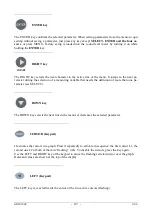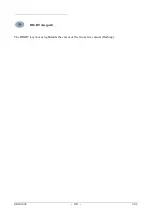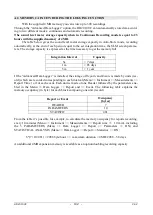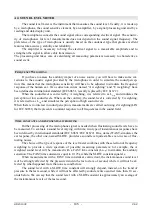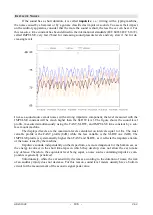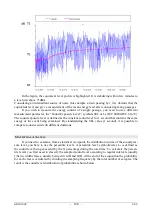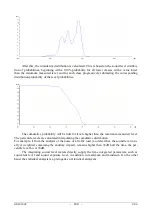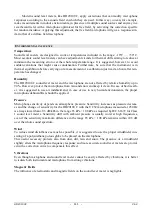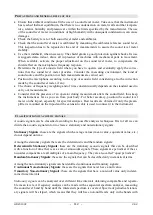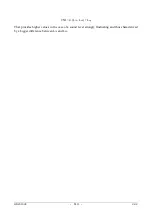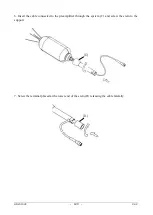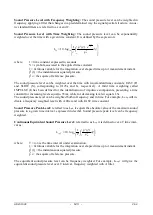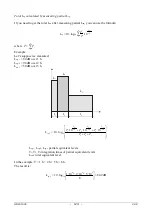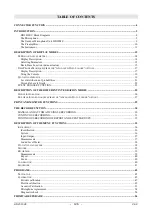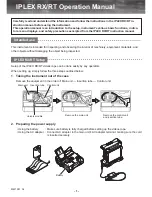
HD2010UC
- 111 -
V4.2
Modern sound level meters, like HD2010UC, apply corrections that can modify microphone
responses according to the acoustic field in which they are used. In this way you can, for example,
make measurements in indoor environments, in presence of multiple sound sources and anyway in a
reverberant field, with a microphone optimized for free field, by activating the correction specific
for random incidence. Applying this adjustment, the free field microphone will give a response sim-
ilar to that of a diffuse field microphone.
E
NVIRONMENTAL INFLUENCE
Temperature
Sound level meters are designed to work at temperatures included in the range: -10°C … +50°C.
Most accurate sound level meters can have adjustment circuits for thermal drifts aiming to reduce at
minimum the measuring error over the whole temperature range. It is suggested, however, to avoid
sudden variations that might cause condensation. Furthermore, be sure that the instrument is in
thermal equilibrium before carrying out a measurement or a calibration (just wait an hour after tem-
perature has changed.
Humidity
The HD2010UC sound level meter and the microphone are not affected by relative humidity up to
90%. However, protect the microphone from rain and snow and keep it clean. In case of bad weath-
er, it is suggested to use a windshield and, in case of use in very humid environments, the proper
microphone dehumidifier should be applied.
Pressure
Microphone sensitivity depends on atmospheric pressure. Sensitivity increases as pressure decreas-
es and the change of sensitivity for the HD2010UC with the UC52 microphone measured at 250 Hz
is always lower than ±0.3 dB/kPa in the range 85 kPa ÷ 108 kPa as required by IEC 61672 for Class
1 sound level meters. Sensitivity drift with ambient pressure is usually worst at high frequencies,
even if the sensitivity maximum difference in the range 85 kPa ÷ 108 kPa remains within ±0.5 dB
over the whole sound spectrum.
Wind
To reduce wind disturbance as much as possible, it is suggested to use the proper windshield, con-
sisting of a polyurethane porous globe to be placed on the microphone.
This useful accessory protects also from dust, dirt, rain and snow. The presence of a windshield
slightly alters the microphone frequency response and more accurate sound level meters are provid-
ed with a correction curve to compensate this effect.
Vibrations
Even though microphone and sound level meter cannot be easily affected by vibrations, it is better
to isolate both instrument and microphone from strong vibrations.
Magnetic Fields
The influence of electrostatic and magnetic fields on the sound level meter is negligible.
Summary of Contents for DeltaOHM HD2010UC
Page 2: ...HD2010UC 2 V4 2 ...
Page 129: ...HD2010UC 129 V4 2 NOTES ...
Page 130: ...HD2010UC 130 V4 2 NOTES ...
Page 131: ......

